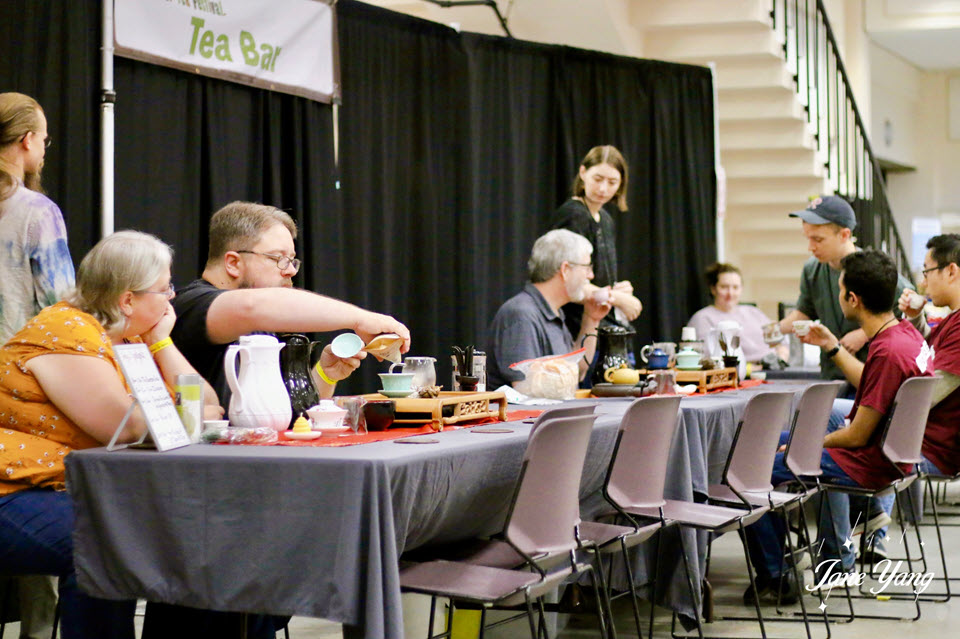Episode 190
Proposed: A Global Alliance to Creatively Constrain Tea Production | Luxmi Tea Acquires Rwanda’s Sorwathe Tea Estate | TikTok Sensation Inspires Sprite+Tea | PLUS Brazil is a vast beverage market with a well-established tradition of tea and herbal infusions now valued at $14 billion. Growth is powered by evolving health and wellness trends that favor diverse and distant teas and blends. Editor Aravinda Anantharaman interviews veteran importer and retailer Elizeth van der Vorst. Her business, Amigos do Chá (Friends of Tea), is located near São Paulo, the hub of specialty tea, a market she has served for 30 years. Read more…
Tea News for the week ending October 22, 2024
Powered by RedCircle
India Tea News
Tea News
Proposed: A Global Alliance to Creatively Constrain Tea Production
By Dan Bolton
Africa’s tea stakeholders believe that actions, more than words, are needed to address the global challenges facing the tea industry.
East African Tea Trade Association (EATTA) Managing Director George Omuga said those attending the 6th African Tea Convention understand the need to reduce production to improve quality and raise profitability, which is essential to financing climate resilience and achieving sustainable cultivation at origins worldwide.
He said a key takeaway from the gathering is the need to establish a global alliance of tea-producing countries to enforce creative constraints on production.
Continued…
Omuga cited India’s decision to close factories nationwide for three months beginning November 30 as an example that other producing countries should adopt. He said that growers in the main tea-producing countries of Kenya, Malawi, Tanzania, Rwanda, and Uganda should lower volumes by reducing their pruning cycle to three years from the current practice of four years.
He said attendees stressed the importance of government and tea board collaboration in establishing quality standards for producing quality teas. “Value addition is critical,” he said.
Omuga explained that Africa has a huge potential for increased domestic consumption. Producers should pursue market diversification strategies, including leveraging the African Continental Free Trade Agreement to promote intra-African tea trade.
He said he hopes to persuade tea producers to give the East Africa Tea Trade Association the marketing mandate to create new markets, expand emerging markets, and protect existing markets.
Attendees discussed the negative impact of synthetic fertilizers on soil ecosystems and the importance of reducing reliance on wood for fuel. To promote sustainability, Africa’s 18 tea-producing nations should increase the participation of women in decision-making positions, he said.
The Rwanda Tea Association (RTA), the National Agricultural Export Development Board (NAEB), and EATTA organized this year’s conference in Kigali. The group last convened in Rwanda in 2013.
BIZ INSIGHT—After returning to Mombasa from the conference, EATTA’s George Omuga spoke in depth with Tea Biz on achieving a balanced definition of sustainability based on renewable energy, low-carbon production, and organic inputs. The interview posts Friday, Oct. 25.

Luxmi Tea Acquires Rwanda’s Sorwathe Tea Estate
US-based Tea Importers Inc. has sold its majority interest in the Sorwathé Tea Estate in Rwanda to an affiliate of Luxmi Estates of India.
Principal Andrew Wertheim, who announced the sale, writes that Sorwathé supports over 6,000 smallholder tea farmers and employs nearly 2,500 workers in the factory, fields, and forests.
He said this strategic move will positively impact the community, adding that the sale will bring synergies for Luxmi customers buying Sorwathe teas produced at Gisovu, Pfunda, and Rugabano.
Rudra Chatterjee, Managing Director, Luxmi Group, commented: “We hope to build on the work the Wertheim family has done to enhance Sorwathé’s quality and improve realizations for smallholder farmers.
“In Gisovu, Pfunda, and Rugabano, farmer incomes have increased due to better price realizations,” writes Chatterjee, who also chairs the Silverback Tea Company – a joint venture between The Wood Foundation Africa and Luxmi Estates.
In 1972, the Government of Rwanda invited Andrew’s father, Joseph Wertheim, to build a tea factory in Kinihira in Rwanda’s Northern Province. A joint venture agreement was signed in 1975, with US investors owning 51% and the Government of Rwanda 49%. The first stage of the factory was completed in the fall of 1978, and the first tea was sold at a London auction in February 1979.
Sorwathe now produces organic, orthodox, and green teas in addition to CTC teas and is the largest single-producing tea factory in Rwanda. The estate and factories are internationally recognized leaders in Corporate Social Responsibility, having received numerous awards.
“We believe Luxmi Tea Company will carry on our commitment to improving lives through tea while making the needed investments to expand Sorwathe’s production capacity to the next level as the crop increases,” writes Wertheim.
In a letter announcing the sale to customers, Wertheim writes, “It has been almost 50 years since we started in Rwanda, and the decision to leave was not easy. Sorwathe has been a big part of our family. It was our father’s passion as well as ours. We hope you all will continue to support Sorwathe under the leadership of Luxmi Tea Company.”
The sale price was not disclosed. Luxmi, which owns 25 estates, generates more than Rs 1500 crore (an estimated $20 million annually) in sales, approximately half of which comes from domestic sales and half from exports.
TikTok Sensation Inspires Sprite+Tea
Coca-Cola will launch TikTok-inspired Sprite + Tea next spring.
The drink originated as a lemon-lime fusion of Lipton Tea steeped in a bottle of soda that generated 19 million views and thousands of favorable comments. The simple recipe involves jamming two black tea bags into the mouth of a bottle of Sprite. Then, close the lid and refrigerate for three hours while the tea cold brews a palatable variation of the well-known blend of half lemonade and half tea.
The short how-to video that Malaysian beverage innovator Hisham Raus posted in July 2023 went viral, accumulating over 125 million impressions in the past year.
Brand owners Coca-Cola took the hint and initiated multiple rounds of consumer research, confirming the combination of citrus offers a “satisfying, Sprite-forward experience with distinct tea flavors.”
Coca-Cola Co. introduced Sprite+Tea at the 2024 National Association of Convenience Stores (NACS) Show and announced a zero-calorie, sweetened version.
Delish.com associate editor Gabby Romero writes that many other people who have already DIY-ed this combination reacted positively to the news.
“We’re in the golden age of soda-based concoctions. With chains like Swig gaining notoriety on reality TV shows and dirty/fluffy recipes going viral online, it’s clear that sweet soft drinks are infinitely customizable,” she wrote.
BIZ INSIGHT—Case volume continues to slide at Coca-Cola. According to the company’s latest financial report, price increases totaling 11% assured quarterly revenue grew by 9% to $11.9 billion. However, sales of soft drinks were flat except for Coca-Cola Zero Sugar, with declines in water (down 6%), sports drinks (down 3%), and coffee (down 6%).
FEATURE

Q|A Amigos do Chá Founder Elizeth van der Vorst
By Aravinda Anantharaman
Elizeth van der Vorst has been a Brazilian tea importer since 1994. Her company, Amigos do Chá, embodies her love of tea and its power to bring people together. Elizeth has been our friend at Tea Journey for several years. Among other things, she feels a deep love for India, particularly Darjeeling. In 2022, Elizeth and her husband Gerard made their maiden trip to India, which was years in the planning. She has returned yearly and plans to lead a tour group from Brazil, South America, and Europe to India in 2025. Here, Elizeth speaks about her love for India and why she can’t wait to bring tea lovers here. Read more
Listen to the Interview
Powered by RedCircle
Sharing is Caring
Proposed: A Global Alliance to Creatively Constrain Tea Production | Luxmi Tea Acquires Rwanda’s Sorwathe Tea Estate | TikTok Sensation Inspires Sprite+Tea | PLUS Brazil is a vast beverage market with a well-established tradition of tea and herbal infusions now valued at $14 billion. Growth is powered by evolving health and wellness trends that favor diverse and distant teas and blends. Editor Aravinda Anantharaman interviews veteran importer and retailer Elizeth van der Vorst. Her business, Amigos do Chá (Friends of Tea), is located near São Paulo, the hub of specialty tea, a market she has served for 30 years. | Episode 190 | 18 October 2024
Sign up to receive Tea Biz weekly in your inbox.

















